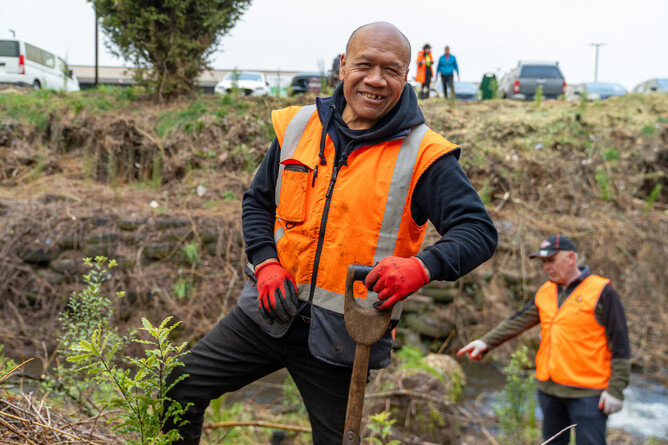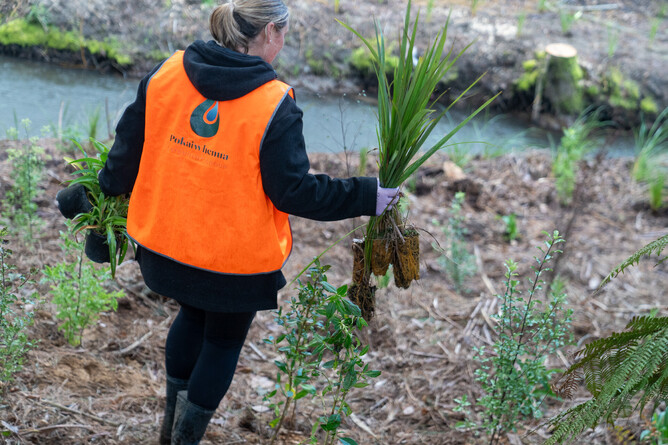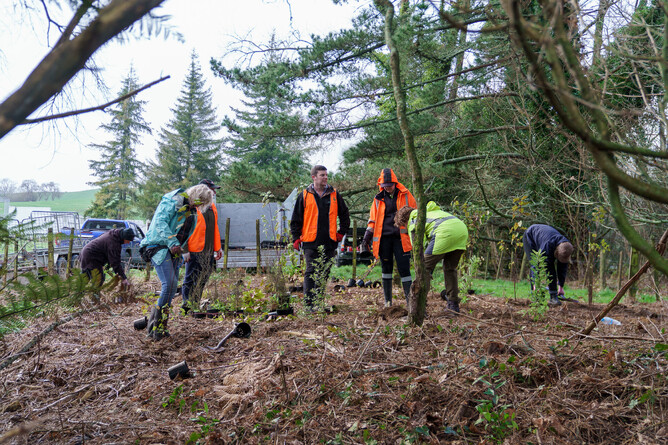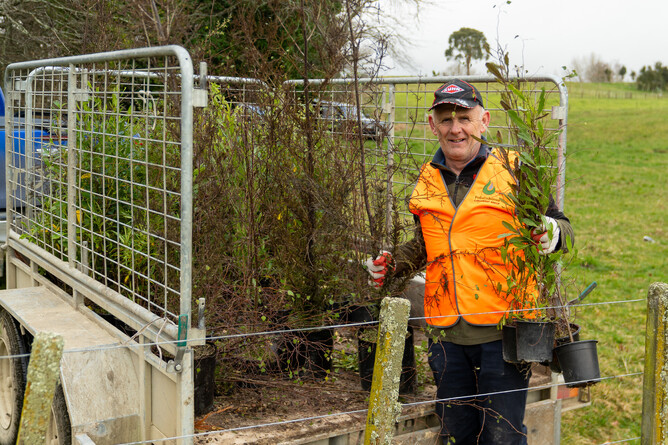Introduction
Clearing the banks on a section of the Whakauru Stream for a community tree planting held today led to the unexpected discovery of a long-forgotten punga-lined walking track that has been overgrown with blackberry for decades.
Pokaiwhenua Catchment Group chair Andrew Lennox said the track was rediscovered in February by contractor Aaron Palmer from Land clear using a digger mounted flail to munch the blackberry from the riverbanks in preparation for today’s planting of 2,200 native trees and shrubs.
“When Aaron was clearing the blackberry, he made the unexpected discovery. He said ‘Hey, you’d better come and have a look at this.’ It was a beautiful walking track with punga retaining walls on both sides that was originally a couple of kilometres long.
“I asked around and found out it was built by periodic detention workers in the 1980s. People used to walk their dogs along it but when Tokoroa was shrinking and there wasn’t the money to maintain it, the blackberry got away.”
Having cleared the blackberry from the riverbanks on both sides of a 200-metre-long stretch of the stream, Palmer and Lennox later spent two days working to fell and chip all the willows in the half hectare zone.
Current Pokaiwhenua Catchment Group co-ordinator Hadleigh Putt said the stretch of Whakauru Stream that has been cleared and is being planted in natives today runs past the newly opened Pūkenga Rau (South Waikato Trades Training Centre) and Manulife Building, two projects which were developed by the South Waikato Investment Fund Trust (SWIFT).
Putt said the community planting day attracted about 70 volunteers from Pokaiwhenua Catchment Group, SWIFT, Te Ohomai Te Pūkenga, Manulife Forest Management, Raukawa Charitable Trust, South Waikato District Council and Fonterra who worked for over two hours. The 2,200 trees and shrubs have been funded by SWIFT and include Renga renga, pittosporum, Ake ake, mahoe, cabbage tree, flax, ribbonwood and wineberry.
“SWIFT got in touch with the Pokaiwhenua Catchment Group to let us know about the Pūkenga Rau and Manulife developments and see if we could work together to tidy up the stream bank.”
SWIFT Chief Executive Amanda Hema said she was delighted by the turnout from the business community for the planting and for the partnership with Pokaiwhenua Catchment Group that is making significant inroads into enhancing the district’s natural beauty.
Putt said the native trees will stabilise the river’s banks. “The streams around this area have a lot of sediment from stream bank erosion because exotics are not good species for holding banks. That stretch of river had a lot of willow along it that can clog streams and prevent water flow.
“We’re really excited about this planting day because we’ve worked a lot with farmers encouraging them to plant and fence out stock to reduce effluent and nutrients going into streams but this is an urban project we’ve been looking for ways to get started on.
“We are grateful for these projects that we can work with the people from Tokoroa on because the streams go right through their backyard. The whole idea of our group is to reconnect the community and the catchment because everything in Tokoroa goes down the Pokaiwhenua.
“Hopefully this project opposite Pūkenga Rau and the Manulife building will be a showpiece for what can be done. The Tokoroa Club is the next neighbour down the river and they have looked across at what we are doing and are enthusiastic – so hopefully it will snowball.”
The Whakauru Stream is a tributary of the Pokaiwhenua Stream, that starts east of Kinleith and flows through Tokoroa and then north through South Waikato before feeding into Waikato River near Maungatautari.




